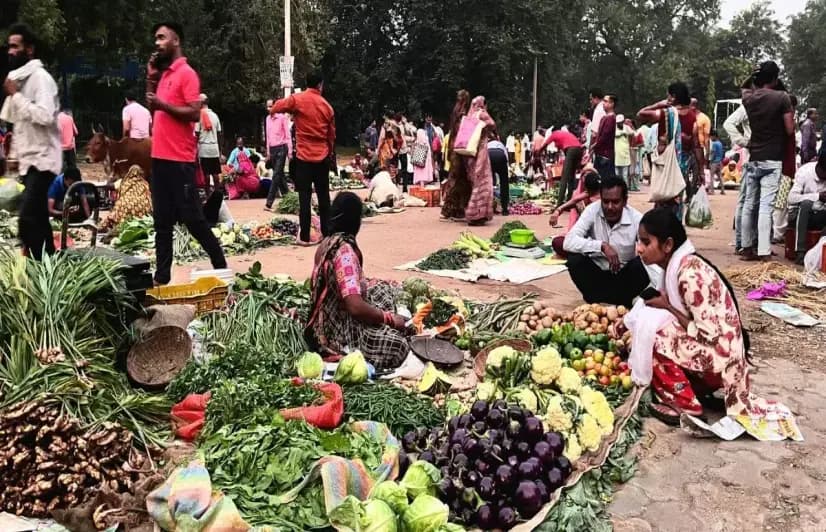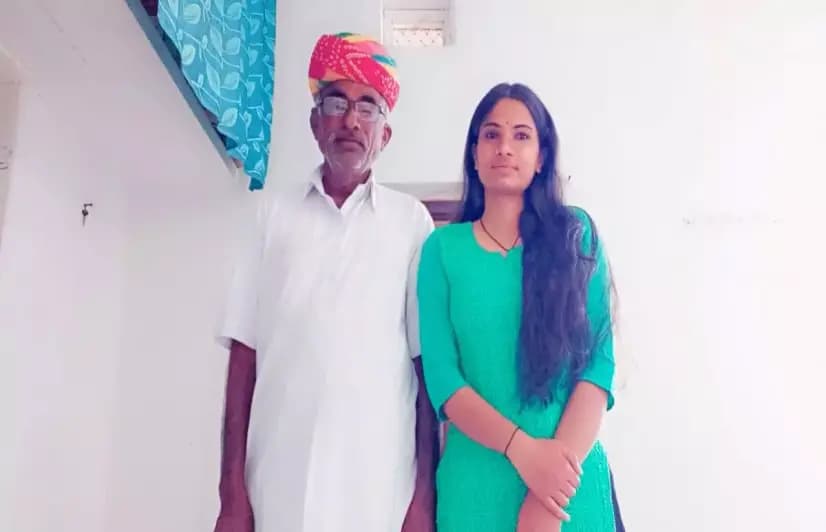Poor market access, absence of exclusive outlets eat into profits of Uttarakhand organic farmers

Poor market access, absence of exclusive outlets eat into profits of Uttarakhand organic farmers
In some cases, the main mandis are located almost 150 km from the villages where organic farming is done
Tehri, Uttarakhand: One of the verticals of the Namami Gange Programme, launched by the Union Government in 2014 to rejuvenate the holy Ganga, is to steer the river clear of chemical fertilisers by promoting organic farming along its banks.
Launched in 2020 with 90% Central funds of Rs 400 crore, the project is implemented by Uttarakhand's agriculture department with an aim to bring 50,000 hectares of village land under organic farming by adopting a cluster approach. Apart from providing training to farmers, funds are utilised to purchase agricultural machinery and quality seeds.
Like Namami Gange, there are other Central schemes to promote organic farming. One such is the Paramparagat Krishi Vikas Yojana, which also is based on a cluster model. Next is the Rashtriya Krishi Vikas Yojana-Jaivik, which helps to reduce the risk in farming, promotes high-quality organic produce, makes provisions for crop storage and market arrangements, and prepares plans according to local needs.
About 70% of the state's population is dependent on agriculture. Generally, farmers in hilly areas do not prefer chemical fertilisers as that would mean spending more on irrigation. Rain-fed crops are the mainstay in the state, where 54% of the total agricultural area is in hilly terrains. As for irrigation, hilly areas form only 13% of the total irrigated land in the state.
If this is the case, why should there
be so many schemes to promote organic farming instead of ways to market quality
products at a decent price to the outside world? This is exactly the point that
farmers have been making for a long time.
Fair price, easy market access
A buyer-seller conference was organised at Gopeshwar in Chamoli district last December, which saw the participation of buyers from Delhi, Gujarat, Uttar Pradesh and the local people. Chamoli district has put up a good show with 128 clusters involving 9,427 farmers practising organic farming on 5,000 hectares of land in villages along the banks of the river and its tributaries under the Namami Gange plan.
At the conference, farmers were vocal about their needs. “The state government
is implementing many projects to promote organic farming, but our biggest worry
is how to sell the produce. There is no government mandi (market)
near our village. The nearest one is Niranjanpur market in Dehradun, located 50
km away,” Bhagchand Ramola from Manjh Gaon in Tehri district told 101Reporters.
Notably, most of his lot are marginal farmers who produce only a little more than what is needed to sustain themselves. If they spend so much money trying to sell their produce at distant places, they would end up with losses as they have to bear travel expenses too.
Opening separate mandis for organic produce close to their respective locations could help farmers a lot. Several farmers told 101Reporters that both organic and non-organic products are sold in the same market, which affected the farmers’ capacity to bargain for a better price.
In organic farming, work is more and production less. Weed killers and chemical fertilisers are used in non-organic farms. However, weeds are removed manually in organic farms and no chemical fertiliser is used to increase output. If an exclusive mandi for organic produce is functional, the farmers could attract the right buyers and get a better price.
Uttarakhand has 23 functional market committees. “Vegetables coming from the mandis of Kotdwar and Najibabad are available in our markets at very cheap prices, due to which we have to sell our organic vegetables at low rates. There is no profit in this. Most of the farmers now avoid farming and try to go to Dehradun, Delhi or any big city to get a job,” said Ashu Rawat, a young farmer from Dharki Bina village in Pauri Garhwal district.
Rawat, the chairman of a farmers’ cooperative society in the area, said the mandi nearest to his village was located in Kotdwar, over 150 km away. “It is not possible for a marginal farmer to sell his crop by taking them there… Last year, I got only Rs 30,000 for tomatoes worth over Rs 2 lakh.”
Noting that only big farmers get the benefit of the government schemes, Rawat said marginal farmers could do far better if a government purchase centre was constructed near the village. Lata Devi of Dharki Bina added that she could not cover input costs as her crops could only be priced the same as the regular produce coming from Najibabad.
Ramola said farmers had raised the need to open local mandis for organic produce with agriculture officials many times, but no solution had been found. “Right now, we pin our hopes on the Sunday morning market for organic vegetables and hill produce near Survey Chowk in Dehradun, where our produce gets Rs 10 to 20 more than the non-organic vegetables. Though the same produce can earn us double the price in Delhi, taking them to faraway places is not a cost-effective choice,” he added.
Despite repeated attempts via phone call and email, the state agriculture department cannot be reached to comment on why mandis were not built near villages and why there was no proper price mechanism.
Meanwhile, agriculture expert Dr Rajendra Kuksal told 101Reporters that the schemes in Uttarakhand seemed quite different on paper and on the ground. “In 2003 itself, the government started promoting organic crops. But the fact that farmers have not found a proper market for their products even now suggests that the government should now make arrangements to buy the produce directly from them.”
Cover photo - A farmer sells his vegetables at the Sunday organic market in Dehradun (Photo - Satyam Kumar, 101Reporters)
Edited by Rekha Pulinnoli
Would you like to Support us
101 Stories Around The Web
Explore All News
Jun 11
‘’मलेरियाने माझा मुलगा अन् नवरा बी मेला’’... गडचिरोलीमध्ये तापमान बदलाचा आणि डासांचा काय आहे संबंध?

Jun 11
ओडिशा : जलवायु चुनौतियों से निबटने मैंग्रोव संरक्षण के कार्य में जुटी महिलाओं की कहानी
-5.webp&w=3840&q=75)
Mar 27
A Painful Period In The Salt Pans Of Little Rann Of Kutch
-13.webp&w=3840&q=75)
Mar 27
Madhya Pradesh: Where is Our Free Time?

Feb 02
Dilemma Faced By Poor Farmers In Bundelkhand: Grow Organic While Selling Non-Organic

Feb 02
Giridih saves its village ponds with NITI Aayog's help

Jul 29
Odisha students use mobile cameras and pens to preserve village history
-18.webp&w=3840&q=75)
Jul 29
Rajasthan: Fasal Bima Yojana and the Art of Minimising Payouts
-16.webp&w=3840&q=75)
May 25
Waste to wealth: Bhopal district panchayat spends Rs 75,000 per month to earn just Rs 4.5 lakh a year

May 10
A Victory For Unmarried Rajasthani Women As Anganwadi Positions Open For Them
About the Reporter
Top stories by Satyam Kumar
Write For 101Reporters
Would you like to Support us
Follow Us On
Editor's Pick
In the remote, tribal villages of Gadchiroli, climate change is breeding malaria
Discontent and misgovernance as Tamil Nadu postpones panchayat elections
Curse of the canal: Seepage and waterlogging lay waste to agriculture in Rajasthan's Luni delta
Assam's ‘left-behind’ women wage lonely, futile battle against extreme floods
'Now we want the chair': Kashmir’s women SHG leaders gear up to fight panchayat elections
Where is our free time?
Common lands, no common laws: tribal law blocks land acquisition in one village, while the other falters
Uttar Pradesh farmers in the red as red rot infestation peaks
Himachal's natural farming certification faces market blues
Recommended Topics






